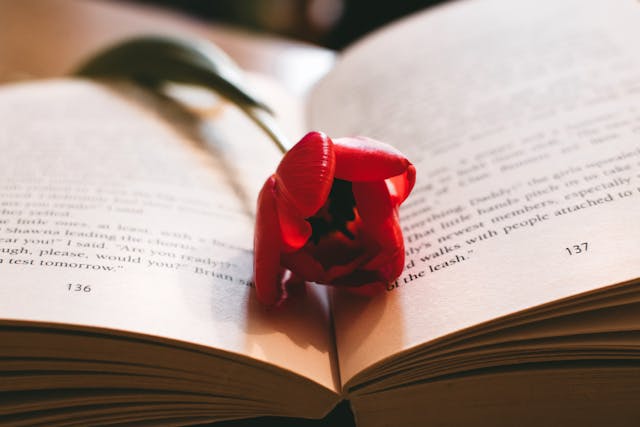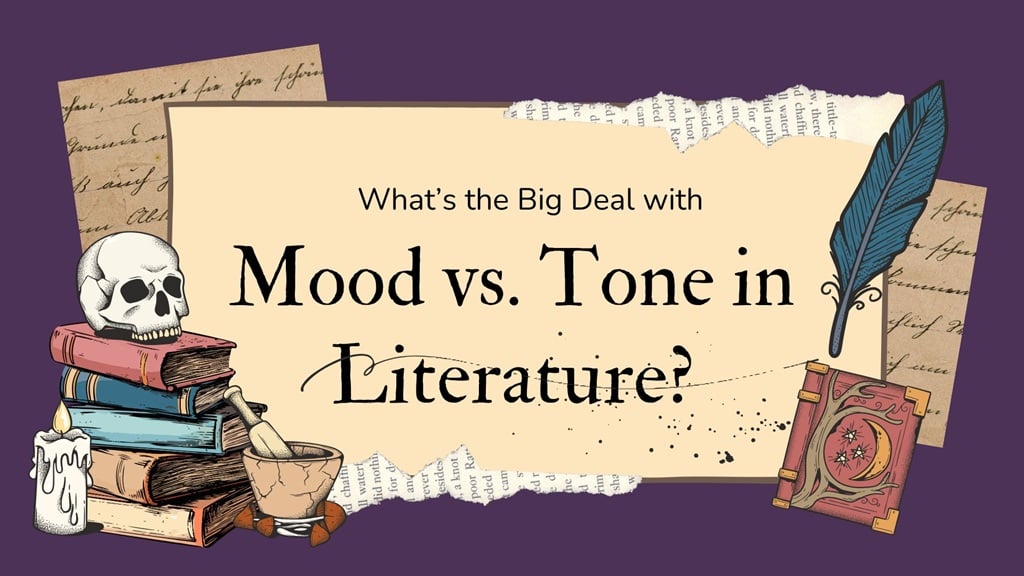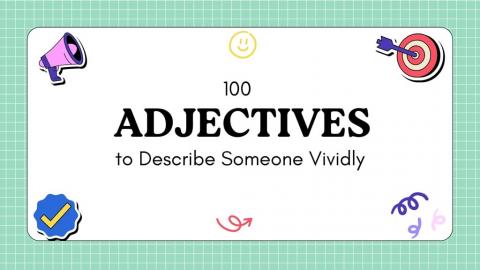If you've ever read a story and felt totally creeped out, uplifted, or emotionally moved—congrats! You’ve already experienced mood in literature. But what about the writer’s attitude behind those words? That’s where tone comes in.
Understanding the difference between mood vs. tone in literature can seriously level up how you read and analyze stories.
Let’s break it down in a way that makes sense—no fancy English teacher jargon, just clear examples and practical tips you can use right away.
What is Mood in Literature?
Mood refers to the emotional atmosphere or feeling that a piece of writing evokes in the reader. It's essentially how the story makes you feel while reading it.

How is Mood Created?
Mood is shaped by various literary elements such as:
- Setting : A haunted house at midnight naturally creates a darker mood than a sunny park.
- Imagery and Description : Vivid sensory details can evoke specific emotions like fear, joy, or nostalgia.
- Word Choice (Diction) : Words with strong connotations-like "gloomy," "serene," or "chaotic"-can strongly influence mood.
- Pacing and Plot Events : Fast-paced action might create excitement; slow, introspective scenes may build tension or melancholy.
Common Moods in Literature:
- Ominous.
- Cheerful.
- Melancholic.
- Suspenseful.
- Romantic.
- Hopeful.
- Terrifying.
👉 Example
In The Tell-Tale Heart by Edgar Allan Poe, the eerie setting and frantic narration create a tense and horrifying mood.
What is Tone in Literature?
Tone reflects the author's or narrator's attitude toward the subject, characters, or audience. Think of it as the voice or perspective from which the story is told.

How is Tone Conveyed?
Tone is primarily communicated through:
- Word choice : Formal, casual, sarcastic, or poetic language.
- Sentence structure : Short, choppy sentences may suggest urgency; long, flowing ones might indicate reflection.
- Point of View : First-person narration can feel personal or biased; third-person may seem objective or detached.
- Irony or sarcasm : These can signal a mocking or critical tone.
Common Tones in Literature
- Ironic.
- Nostalgic.
- Cynical.
- Reverent.
- Optimistic.
- Sarcastic.
- Objective.
👉 Example
In Pride and Prejudice, Jane Austen uses a witty and satirical tone to critique societal norms and class structures.
The Key Difference: Mood vs. Tone
| Aspect | Mood | Tone |
|---|---|---|
| Focus | Reader's feelings | Author/narrator's attitude |
| Created by | Setting, imagery, pacing | Diction, syntax, point of view |
| Purpose | Evoke emotion | Show perspective |
To remember the difference:
- Mood = "Mood of the room" - How does the reader feel ?
- Tone = "Tone of voice" - What is the writer thinking or implying ?
How Mood and Tone Work Together
While mood and tone are separate elements, they often collaborate to enhance the impact of a literary work.
For instance, a cynical tone may contribute to a pessimistic or disillusioned mood, while a hopeful tone can uplift the reader and foster a joyful or inspiring mood.
👉 Example
In A Modest Proposal by Jonathan Swift, the sarcastic tone contrasts with the shocking and disturbing mood, highlighting the absurdity of the social issues being criticized.
Examples of Mood vs. Tone in Literature
Let's look at some classic examples to better understand how these elements function:
1. "The Tell-Tale Heart" by Edgar Allan Poe
- Tone : Nervous, obsessive, defensive
- Mood : Tense, eerie, horrifying
2. "Pride and Prejudice" by Jane Austen
- Tone : Witty, satirical
- Mood : Light-hearted, romantic
3. "Lord of the Flies" by William Golding
- Tone : Serious, philosophical
- Mood : Dark, suspenseful
4. "A Modest Proposal" by Jonathan Swift
- Tone : Sarcastic, bitter
- Mood : Shocked, outraged
These examples show how authors use tone and mood intentionally to guide readers' interpretations and emotional responses.
Practice Identifying Mood and Tone
Want to sharpen your skills? Try identifying the mood and tone in the following excerpts:
🧛♂️ Excerpt from “The Tell-Tale Heart”
"I heard all things in the heaven and in the earth. I heard many things in the past week. But why will you say that I am mad?"
- Tone : Defensive, paranoid.
- Mood : Unsettling, terrifying.
💕 Excerpt from “Pride and Prejudice”
"It is a truth universally acknowledged, that a single man in possession of a good fortune, must be in want of a wife."
- Tone : Satirical, ironic.
- Mood : Playful, slightly judgmental.
👿 Excerpt from “A Modest Proposal”
"I have been assured by a very knowing American of my acquaintance in London, that a young healthy child well nursed is, at a year old, a most delicious, nourishing, and wholesome food..."
- Tone : Mock-serious, sarcastic.
- Mood : Disturbing, shocking.
Why It Matters: Understanding Mood and Tone
Recognizing mood vs. tone in literature helps readers:
- Interpret deeper meanings and themes.
- Analyze an author's purpose and message.
- Engage more deeply with the text emotionally and intellectually.
Whether you're a student, writer, or avid reader, mastering these concepts will significantly enhance your literary analysis skills.
So, What’s the Bottom Line on Mood vs. Tone?
At the end of the day, mood vs. tone in literature might sound like something straight out of an English class, but it’s actually super useful—whether you're reading for fun, writing your own stories, or trying to ace that next book report.
Read also
Think of mood as the vibe you get while reading—how the story makes you feel. And tone ? That’s more about how the writer feels about what they’re saying or showing. Once you start spotting the difference, you’ll notice how authors use these tools on purpose to pull at your heartstrings, make you laugh, or even question what’s really going on.
So next time you dive into a novel, poem, or short story, try asking yourself:
👉 “Is this part supposed to make me feel scared… or is the narrator just being sarcastic?”
You might be surprised by how much more you get out of the story!











